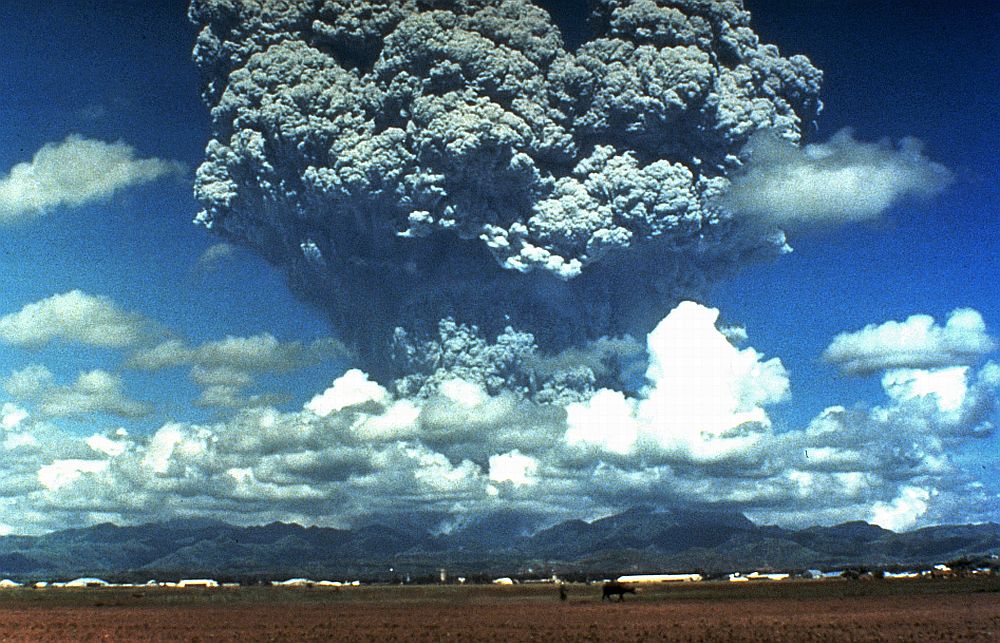The largest volcanic eruptions. The world's most famous volcanic eruptions
Change text size: A A
On August 24, 79, the most famous volcanic eruption in history occurred - the eruption of Vesuvius. Under the volcanic ashes were buried the cities of Pompeii, Herculaneum and Stabia. Ashes from Vesuvius reached Egypt and Syria. We decided to make a selection of several known to the whole world volcanic eruptions.
1. One of the largest eruptions in modern history occurred on April 5-7, 1815 in Indonesia. On the island of Sumbava erupted volcano Tambora. Mankind this volcanic eruption was remembered because of the large number of victims. During the catastrophe itself and subsequently, 92,000 people died from starvation. The ash clouds from the eruption of Tambor closed the sun's rays for so long that it even led to a drop in temperature over the terrain.
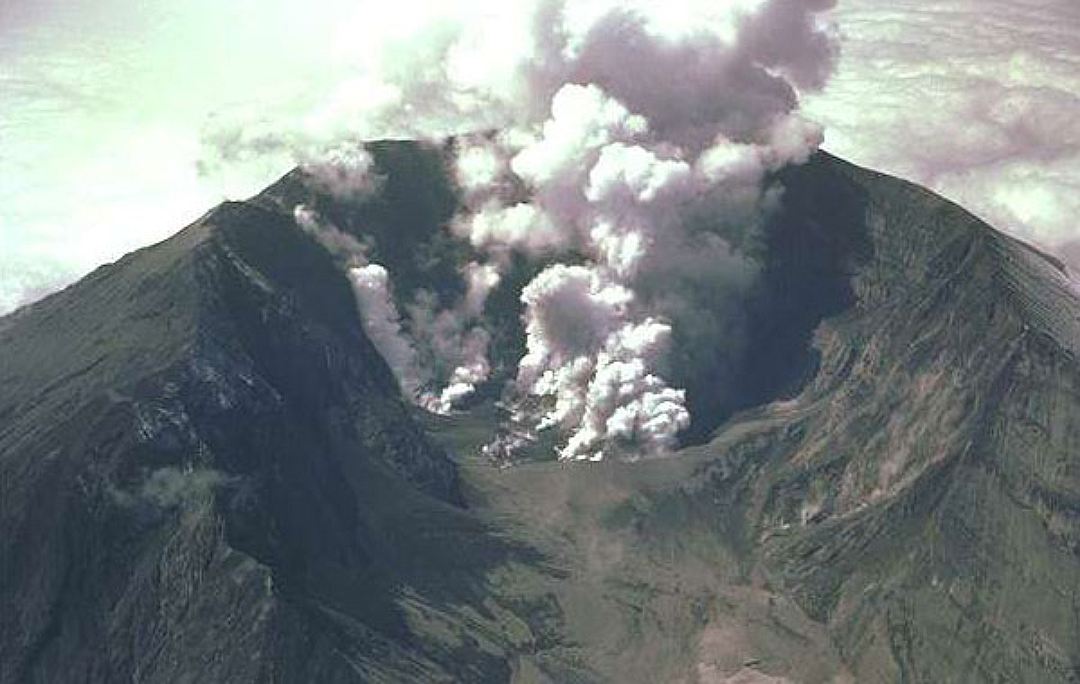
2. 27 thousand years ago erupted volcano Taupo in New Zealand. It remains the largest volcanic eruption in the last 70 thousand years. During this time about 530 km³ of magma was erupted from the mountain. After the eruption, a giant caldera was formed, which is now partially filled with Lake Taupo, one of the most beautiful tourist destinations in the world.
3. August 27, 1883 between the islands of Java and Sumatra began the eruption of the volcano Krakatau. This eruption is known by the largest volcanic explosion in history. The tsunami caused by this explosion covered 163 villages. At the same time, more than 36 thousand people died. A roar from the collision force of the explosion could hear 8 percent of the world's population, and pieces of lava threw up to a height of 55 kilometers. Volcanic ash, which was carried by the wind, fell after 10 days for 5 thousand kilometers from the site of the eruption.
4. After the eruption of the Santorini volcano in Greece, the Crete civilization died. It happened about 1450 BC on the island of Fehr. There is a version that Fera - this is Atlantis, which was described by Plato. According to another version, the pillar of fire that Moses saw was the eruption of Santorini, and the parting sea was the consequence of the plunging of the island of Fehr into the water.
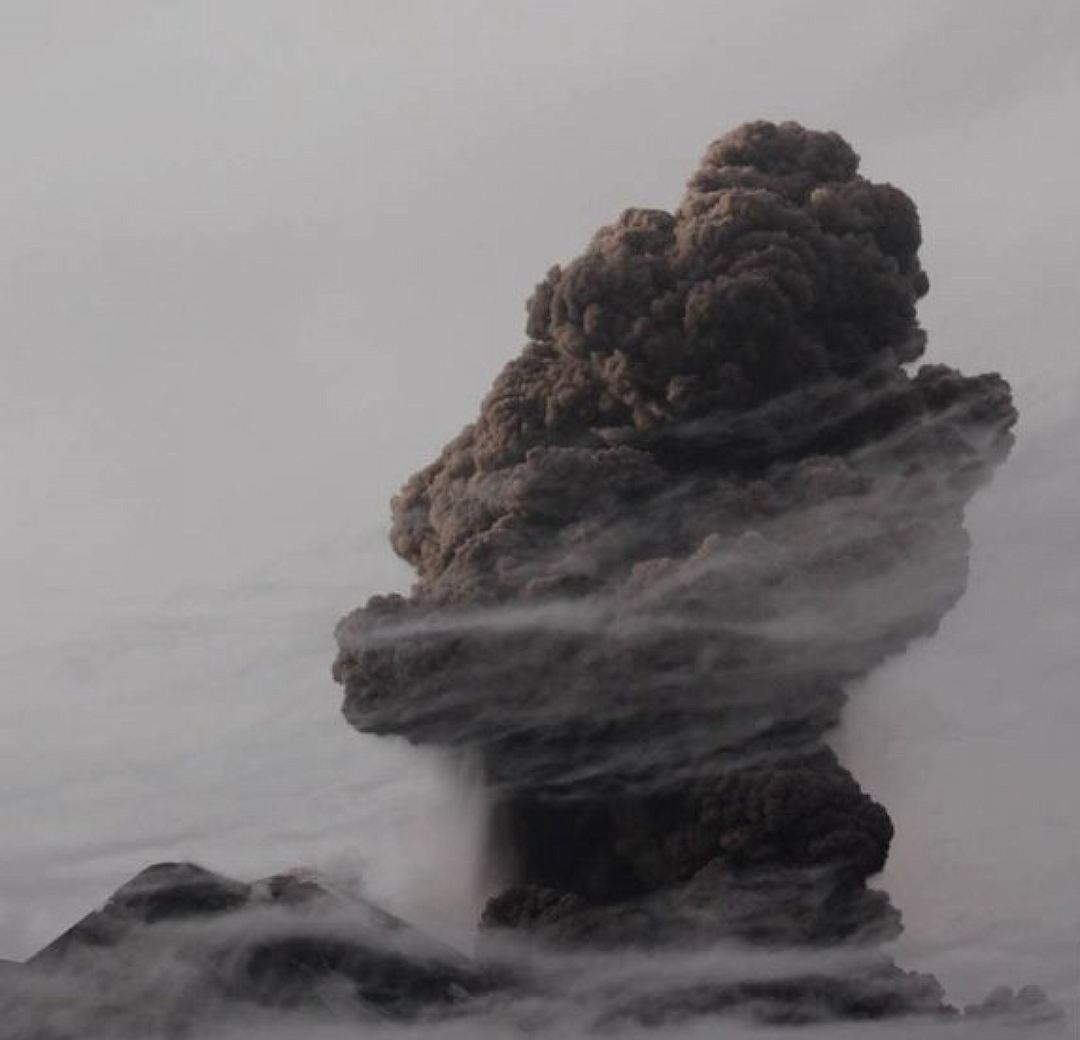
5. The volcano Etna, which in Sicily, according to some reports, erupted more than 200 times. In one of them, in 1169, 15,000 people died. Etna is still an active volcano, which erupts roughly once in 150 years. But the Sicilians still continue to settle on the slope of the mountain due to the fact that the frozen lava makes the soil fertile. At the eruption, which occurred in 1928, a miracle occurred. Lava stopped right in front of the Catholic procession. At this point a chapel was built. Before it, too, lava stopped from the eruption, which occurred 30 years after the construction.
6. In 1902, an eruption of the Montagne-Pele volcano occurred on the island of Martinique. On May 8, a cloud of red-hot lava, vapors and gases covered the city of Saint-Pierre. The city was destroyed in a few minutes. Of the 28,000 residents who were in the city, two were saved, including Opost Siparis, sentenced to death. He was rescued by the walls of the death chamber. The governor pardoned Siparis and sotatok lives he traveled around the world, talking about what happened.
7. In ten minutes, the city of Armero was destroyed in Colombia after the eruption of the volcano Nevado del Ruiz on November 13, 1985. This city was located 50 kilometers from the eruption site. Of the 28,000 residents after the eruption, only 7,000 remained alive. Much more people could survive if they listened to volcanologists who warned of a catastrophe. But experts this day no one believed, as their predictions several times proved to be erroneous.

8. June 12, 1991 in the Philippines came to life, sleeping 611 years old volcano Pinatubo. In the catastrophe 875 people died. Also during the eruption, the air force base and the US naval base were destroyed. The eruption led to a drop in temperature by 0.5 degrees Celsius and a reduction in the ozone layer, in particular, to the formation of an ozone hole over Antarctica.
9. In 1912, on June 6, one of the largest eruptions of the 20th century occurred. The volcano Katmai erupted in Alaska. The column of ash from the eruption rose by 20 kilometers. On the site of the crater from the volcano formed a lake - the main attraction of the National Park Katmai.

10 . Eruption of the Icelandic volcano Eyyafyallayekyul in 2010. Thick clouds of volcanic ash enveloped some parts of the countryside of Iceland, and an invisible plume of sand and dust covered Europe, "clearing" the sky of the aircraft and forcing hundreds of thousands of people in a hurry to look for hotel rooms, train tickets and hiring a taxi.
11 . Klyuchevskaya Sopka, Russia. This volcano erupted about 20 times. In 1994, another eruption began, when a powerful, ash-laden eruptive column rose from the summit crater to an altitude of 12-13 km. Fountains of red-hot bombs flew 2-2.5 km above the crater, the maximum size of the debris reached 1.5-2 m in diameter. To the south-east stretched a thick dark plume, loaded with volcanic products. Powerful mud flows have traveled along the already worked-out riverbeds 25 - 30 km and reached the river. Kamchatka
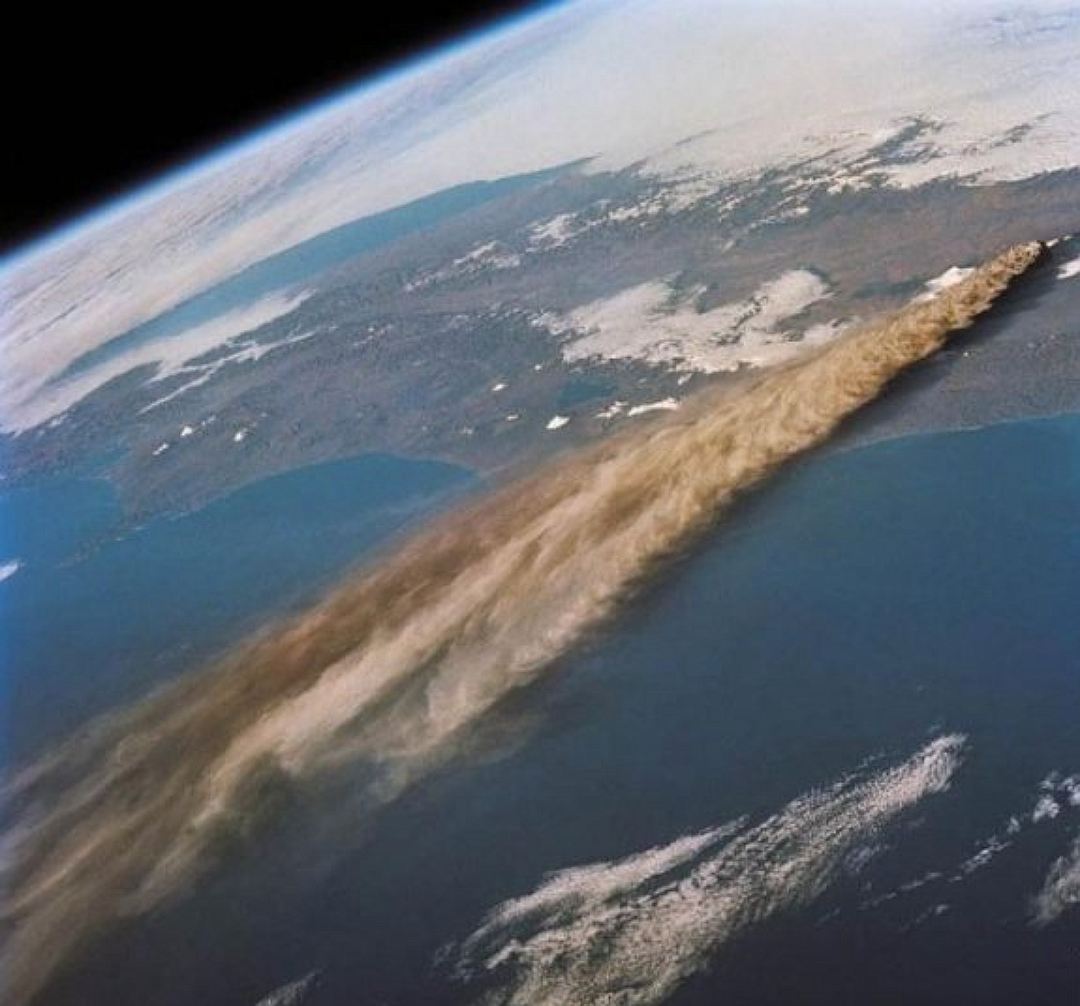
According to various estimates, on Earth there are from 1000 to 1500 active volcanoes. Distinguish existing, that is, constantly or periodically erupting, asleep and extinct volcanoes, about the eruption of which there is no historical data. Almost 90% of the active volcanoes are located in the so-called fiery zone of the Earth - a chain of seismically active zones and volcanoes, including underwater ones, stretching from the coast of Mexico to the south through the Philippine and Indonesian archipelagos and to New Zealand.
The largest of the volcanoes on the earth - Mauna Loa on the island of Hawaii, the USA - 4170 m above sea level and about 10 000 m from the base at the bottom of the ocean, the crater has an area of more than 10 sq. Km. km.
January 17, 2002 - the eruption of Nyiragongo volcano in the east of the Democratic Republic of the Congo. A large part of the city of Goma and 14 surrounding villages were buried beneath the streams of lava. The element killed more than 100 lives and drove out of their native places up to 300 thousand inhabitants. A huge damage was caused to coffee and banana plantations.
October 27, 2002 erupted Sicilian volcano Etna, the highest in Europe (3329 m above sea level). The eruption was completed only on January 30, 2003. Several volcanic campsites, a hotel, ski lifts and groves of Mediterranean pine were destroyed by volcanic lava. The eruption of the volcano caused damage to the agriculture of Sicily at about 140 million euros. It erupted also in 2004, 2007, 2008 and 2011.
July 12, 2003 - the eruption of the Soufriere volcano on the island of Montserrat (the archipelago of the Lesser Antilles, possession of Great Britain). The island area of 102 square meters. considerable material damage was caused. Ashes, which covered almost the entire island, acid rain and volcanic gases destroyed up to 95% of the crop, the fishing industry suffered heavy losses. The island's territory was declared a disaster zone.
On February 12, 2010 the eruption of Soufriere volcano began again. A powerful "rain" from the ashes hit several settlements on the island of Gran Terre (Guadeloupe, possession of France). All schools were closed at Pointe-a-Pitre. The local airport temporarily stopped working.
In May 2006, during the eruption of the Merapi volcano on the Indonesian island of Java, the most active of the island's 42 volcanoes, a four-kilometer column of smoke and ash rose, and authorities announced the banning of airplanes not only over Java, but also on international routes from Australia to Singapore.
On 14 June 2006, the eruption occurred again. On the slopes, up to 700 thousand cubic meters of hot lava flowed out. 20 thousand people were evacuated.
As a result of the eruption on October 26, 2010, which lasted about two weeks, the lava flows spread over five kilometers, more than 50 million cubic meters of volcanic ash mixed with basalt dust and sand were thrown into the atmosphere. Victims of the disaster were 347 people, more than 400 thousand residents were evacuated. The eruption broke the air traffic over the island.
On August 17, 2006, in Ecuador, as a result of the powerful eruption of the Tungurahua volcano, located 180 km from the Ecuadorian capital of Quito, at least six people were killed, dozens were burned and injured. Thousands of peasants were forced to leave their homes, because of poisonous gases and ash, the death of livestock was observed, almost the entire crop was killed.
In 2009, the airline "Alaska Airlines" repeatedly canceled flights due to the eruption of the volcano Redout, from the crater of which the ash was thrown out to a height of up to 15 km. The volcano is located 176 km south-west of the city of Anchorage, Alaska, USA.
On April 14, 2010, the eruption of the Icelandic volcano Eyjafjadlajokudl led to the biggest crisis in the history of passenger aviation. The resulting ash cloud covered almost the whole of Europe, which led to the fact that from 15 to 20 April 18 European countries completely closed their skies, and the rest of the countries were forced to close and open their airspace depending on weather conditions. The governments of these countries decided to cease operations in connection with the recommendations of the European bureau for the control of air navigation safety.
In May 2010, due to the regular activation of the Icelandic volcano Eyjafjadlajokudl, the airspace over Northern Ireland, in the north-west of Turkey, over Munich (Germany), over Northern and partly central England, and also over a number of areas of Scotland was closed. The airports of London, as well as Amsterdam and Rotterdam (the Netherlands) were included in the ban zone. Due to the advance of the volcanic ash cloud to the south, flights were canceled at the airports of Portugal, north-west Spain, northern Italy.
On May 27, 2010 in Guatemala, as a result of the eruption of the Pacaya volcano, two people were killed, three were missing, 59 were injured and about 2 thousand were left homeless. Due to sand and ash, agricultural crops have suffered, more than 100 houses have been damaged or destroyed.
May 22-25, 2011 there was an eruption of the volcano Grimsvotn (Iceland), resulting in the airspace of Iceland was temporarily closed. The ash clouds reached the airspace of Great Britain, Germany and Sweden, some flights were canceled. According to volcanologists, the volcano threw much more ash into the atmosphere than the Eyjafjallajokull volcano in April 2010, but the ash particles were heavier and settled more quickly to the ground, so the transport collapse was avoided.
June 4, 2011, the volcano Puyueu erupted on the Chilean side of the Andes. The ash column reached a height of 12 km. In neighboring Argentina, the city of San Carlos de Bariloche was hit by ashes and small stones, the work of the airports of Buenos Aires (Argentina) and Montevideo (Uruguay) was paralyzed for several days.
August 10, 2013 in Indonesia as a result of the eruption of the volcano Rockatende, located on a small island of Palue, killing six local residents. About two thousand people were evacuated from the danger zone - a quarter of the residents on the island.
The unexpected eruption of the volcano began on September 27, 2014. It was accompanied by powerful emissions of toxic gases.
The climbers and tourists who were at the time of the eruption on the mountain slopes perished and suffered. Japanese doctors officially confirmed the death of 48 people as a result of the eruption of the volcano Ontake. According to the Japanese press, nearly 70 people have suffered poisoning with toxic gases and the destruction of the airways by incandescent volcanic ash. Altogether, there were about 250 people on the mountain.
June 6-8, 1912, there was an eruption of the volcano Novarupta, the USA - one of the largest eruptions of the 20th century. Kodiak Island, located nearby, was covered with a 30-centimeter layer of ash, and because of acid rain caused by volcanic rock emissions, people had their clothes disintegrated.
On this day, we decided to recall the five most devastating volcanic eruptions in history.
 Volcano Novarupta, USA
Volcano Novarupta, USA 1. The largest eruption in the last 4000 years is the eruption of the Tambor volcano, which is located in Indonesia on the island of Sumbawa. The explosion of this volcano occurred on April 5, 1815, although the first signs he began to serve as early as 1812, when the first streams of smoke appeared over him. The eruption continued for 10 days. The atmosphere was thrown 180 cu. km. pyroclastics and gases, tons of sand and volcanic dust covered the area within a radius of one hundred kilometers. After the eruption of the volcano, because of the huge amount of pollution, for three days the night stood in a radius of 500 km. From him. According to eyewitnesses, nothing could be seen beyond his own hand. The death toll was over 70,000 people. The entire population of Sumbawa was destroyed, and the inhabitants of the nearby islands were also affected. The next year after the eruption was very difficult for residents of this area, he was nicknamed "the year without summer". Extremely low temperatures caused crop failure and famine. Because of such a large eruption, the climate of the whole planet was changed, in many countries the snow this year kept for most of the summer.
 Volcano of Tambor, Indonesia
Volcano of Tambor, Indonesia 2. The most powerful eruption of the volcano occurred in 1883 on the island of Krakatau, which is between Java and Sumatra, on which the volcano of the same name is located. The height of the smoke column during the eruption was 11 kilometers. After that, the volcano calmed down, but not for long. In August, the culmination phase of the eruption began. Dust, gas, debris rose to a height of 70 km, and fell upon the territory of more than 1 million square meters. km. The bursts of the explosion exceeded 180 decibels, and this is much more than the pain threshold of a person. An air wave rose, which several times round the planet, tearing the roofs off the houses. But this is not all the consequences of the eruption of Krakatoa. The tsunami that was triggered by the eruption destroyed 300 cities and settlements, more than 30,000 people died, and many more people were left without a roof over their heads. Six months later, the volcano finally calmed down.
 Krakatoa volcano
Krakatoa volcano 3. In May 1902, one of the most terrible catastrophes of the twentieth century erupted. The inhabitants of the city of Saint-Pierre, located on Martinique, considered the volcano Mont-Pellet to be weak. No one paid any attention to the earthquakes and buzz, despite the fact that they lived only 8 kilometers from the mountain. At about 8 am on May 8, his eruption began. Volcanic gases and lava flows rushed to the city, causing fires. The city of Saint-Pierre was destroyed, more than 30,000 people died. Of all the residents, only the criminal remained in the underground prison.
Now this city is restored, and at the foot of the volcano, in memory of the terrible event, a museum of volcanology was built.
 The volcano of Mont Pele
The volcano of Mont Pele 4. For five centuries, the Ruiz volcano, which is in Colombia, did not give life, and people considered it asleep. But, unexpectedly, on November 13, 1985, a large eruption began. Because of the outflowing lava flows, the temperature rose and the ice covering the volcano melted. The streams reached the city of Armero and virtually destroyed it. According to official data about 23 thousand people died or went missing, tens of thousands of people lost their homes. Significantly affected coffee plantations, this year the Colombian economy suffered huge damage.
 Volcano Ruiz, Colombia
Volcano Ruiz, Colombia  Unzen Volcano
Unzen Volcano 5. The Japanese volcano Unzen, located in the south-west of the island of Kyushu, closes the five most devastating eruptions. The activity of this volcano manifested itself in 1791, and on February 10, 1792, the first eruption occurred. Then followed a series of earthquakes that brought significant destruction in the city of Simabara, which is nearby. Above the city formed a kind of dome of frozen lava, and on May 21 it split due to another earthquake. A stone avalanche hit the city and into the sea, which caused a tsunami, the waves of which reached 23 meters. More than 5,000 people died with falling pieces of rock, and even more than 10 thousand people were killed by the elements.
The eruption of the volcano is a spectacular spectacle, but very dangerous both for humans and for flora and fauna. The impact on the environment depends on the type of eruption. An explosive eruption can release a huge amount of dust and gas into the atmosphere, causing cataclysms that have a serious impact on the climate. In many countries, special surveillance systems have been installed that help to anticipate a volcanic eruption. Thanks to these systems, some humanitarian disasters were avoided.
Recent studies have helped restore the history of volcanic eruptions over the past 2,000 years. To do this, scientists analyzed the layers of sulfate present in the ice of the Antarctic. Through careful analysis of layers of sulphate dust, scientists have been able to restore the complete history of volcanic eruptions during this period.
Santorini, Greece, around 1500 BC
The height of the column of the volcano was 36 km. No one can say the exact duration of the eruption. The emission rate is 2.5 × 108 kg / s. Santorini, also known as Tera, is a beautiful island of the Cyclades volcanic center. Archaeologists and historians believe that this catastrophic eruption led to the decline of decline, and then to the disappearance of the Minoan civilization.
Vesuvius, Italy, the 79th year
The height of the pole is 32 km, the duration of the eruption is 9.5 hours, the volume of magma is 2.1 km, the rate of emissions is 1.5 × 108 kg / s. The number of victims was approximately 2,000 people. In 1849, near Vesuvius, the first volcanological observatory was opened in the world. According to an eyewitness, the eruption of the volcano proceeded in two stages. First there was the formation of the Plynian pillar with a height of more than 30 km, which spilled rain from the water, volcanic ash and pumice to the cities of Pompeii and Stabia. During the second stage of the eruption of Vesuvius, pyroclastic flows of lava destroyed Herculaneum and what was left of Pompeii.
Kelud, Indonesia, 1586
The number of victims was approximately 10,000. Kelud is a small stratovolcano. Nevertheless, it remains one of the most dangerous volcanoes of the island of Java. In the period of calm in the crater of the volcano a lake is formed. Eruptions are accompanied by mud volcanic flows due to the presence of a large volume of water. The government installed a drainage system to prevent the huge size of the lake and thus avoid too damaging mud flows. The eruption of the volcano in 1586 is considered the most dangerous and destructive in the history of its eruptions. The last eruption of Kelud occurred in 1990.
Vesuvius, Italy, 1631
December 16, 1631 at 7 o'clock in the morning again erupted Vesuvius. A large area around the volcano was devastated by rain from the ashes and mud flows. During the eruption of the volcano killed about 4000 people. The height of the column was 19 km, the eruption lasted 11 hours, the emission rate was 1.5 x 107 - 3 x 107 kg / s.

Lucky, Iceland, 1783
The number of victims is approximately 10,500 people. The main volcanic activity is rain from the ashes and gas. Lucky consists of 130 volcanic craters with a length of 25 km. These craters were formed during a major eruption between 1783 and 1785. This eruption is considered to be the worst natural disaster in Iceland. Lava descended from the craters at a speed of 8000 m3 / s. It covered an area of about 600 km². The atmosphere got about 500 million tons of gas. More than half of the livestock died of poisoning or famine. 20% of the Icelandic population, or 9,000 people, died of starvation in the first months after the disaster.

Unzen, Japan, 1792
Mount Unzen is located on the Shimabara Peninsula, in the northwest of Kuishu Island. In 1972 there was a series of explosions accompanied by lava flows. The eruption of the volcano occurred three months later. The eruption is considered the greatest volcanic catastrophe in. About 15,200 people died. Seismic activity caused the collapse of the mountain top. The volcanic rock hit the sea and caused a series.

Tambora, Indonesia, 1815
The volcano is on the island of Sumbawa, in the east of the island of Java. Tambora is a large stratovolcano, which occupies 1400 km ². The diameter of the central part of the crater is 6 km, and the depth is 650 m. During the eruption of Tambora, approximately 92,000 people died. The height of the column of the volcano reached 44 km, the eruption lasted more than 2 hours. In addition to the huge number of victims, the eruption led to a disturbance of the Earth's climate. Throughout Europe, 1815 was considered to be a year without summer, since volcanic ash, thrown into the atmosphere, absorbed part of the sun's rays. This catastrophe caused a cooling of the climate at the level of the planet. Hunger and epidemics have affected all continents.
Krakatoa, Indonesia, 1883
Krakatau is the name of a volcanic island located between the islands of Java and Sumatra. May 20, 1883 "woke up" the volcano. August 26 is considered the beginning of the eruption, reached its apogee on the 27th. On this day, a loud explosion was heard right up to the shores of Australia. A volcanic column 25 km high burst out, covering the region with ashes and pumice. The sun was not visible within 2 days. The eruption of Krakatoa resulted in a series of tsunamis, during which about 36,000 people died. In total, the number of victims was 36,500. The shock wave was recorded around the world. Because of the dust, there was a drop in temperature on Earth. In Europe, the level of sunlight fell by 10%.

Santa Maria, Guatemala, 1902
This is a large active volcano. The eruption of this volcano lasted 19 days. The height of the pole is 34 km, the rate of emissions is 1.7 x 108 kg / s. The number of victims was approximately 6000 people.

Soufriere, Saint Vincent (Antilles), 1902
Soufriere - stratovolcano, which is characterized by the formation of lava domes, which are subsequently destroyed periodically due to explosions. Recently, the eruptions of Soufriere occurred in 1718, 1812, 1902-1903 and 1979. During the eruption of the volcano in 1902, approximately 1,500 people died.
Montagne-Pele, Martinique (Antilles), 1902
This stratovolcano, which ejects too viscous magma for flows. At the top of the mountain, this magma forms domes, which are periodically destroyed due to collapses or explosions. Until 1902, the volcano for almost three centuries did not give significant signs of activity. The volcanic cycle lasted between 1902 and 1903. The number of victims was about 28,000 people.

Kvitsapu, Andes, on the territory of Chile, 1932
This volcano is at the end of a chain of volcanoes forming the volcanic system of the turbulent Descabes-Grande. The diameter of its crater is 500 m. The height of the volcanic column reached 30 km, the eruption lasted 18 hours.
Lamington, New Guinea, 1951
This volcano did not show itself for a long time. January 15, seismic shocks caused the collapse of the volcano on the sides. Then a column of ash and gas burst from the top of the mountain. Numerous explosions freed huge volcanic congestions. The number of victims reached 23,000.

St. Helens, northwest of the United States
A huge stone avalanche led to the death of 57 people and destroyed the area of hundreds of kilometers.
Nevado del Ruiz, Colombia, 1985
The current Nevado del Ruiz is located in the crater of the ancient volcano Ruiz. All year round it is covered with a thick layer of snow and ice. Heat from eruptions drowns the glaciers on top, thus causing destructive flows. During the eruption of the volcano in 1985, more than 20,000 people died. As soon as the flows stop, they become hard as concrete, leading to the death of still living victims.

Pinatubo, Philippines, 1991
Pinatubo is a volcano that has been operating for more than a million years. His activity is divided by several centuries of tranquility, during which tropical plants extend on its slopes. A number of explosive eruptions threw into the atmosphere about 10 km³ of rock and ash. Pyroclastic flows burned up to 60 km of area in the district. The eruption lasted 6-9 hours. About 400 people died. This eruption had an impact on the climate and caused a drop in temperature.
![]()
Nyiragongo, Democratic Republic of the Congo, 2002
Volcanoes are one of the most insidious and cruel natural phenomena. They hide for hundreds of years, creating the illusion of security, and then wake up and destroy all life around. One volcano can swallow whole cities, turn summer into winter and forever change the course of history. Scientists predict that it is these monsters that can destroy our civilization. Time has come to tell about the most terrible eruptions of volcanoes.
Vesuvius is the killer of ancient cities
The eruption of Vesuvius in 79 AD. e. was not the most powerful in history, but definitely, one of the most disastrous. For two days he destroyed the large city of the Roman Empire, which inhabited 20 thousand people - Pompeii. People were sure that the volcano fell asleep forever, so when the rumble came from the side of the mountain, they continued to do their own thing.
A source:
When pieces of pumice and ash flakes fell from the sky, people began to leave Pompeii. In the city there were several thousand people who were doomed to destruction.
Scientists concluded that people who did not manage to leave the city, killed the pyroclastic flow. It is a swiftly carrying avalanche, consisting of incandescent ash, pumice and volcanic gases. Six such streams descended from Vesuvius, buried Pompeii and three smaller settlements - Herculaneum, Oplontis and Stabia.
The video shows the reconstruction of this terrible event.
Tambora - a volcano that caused a "year without summer"
The eruption of the volcano Tambora in April 1815 on the island of Sumbava, according to various sources, claimed the lives of 70 to 170 thousand people. No other volcano has killed so many people in history.
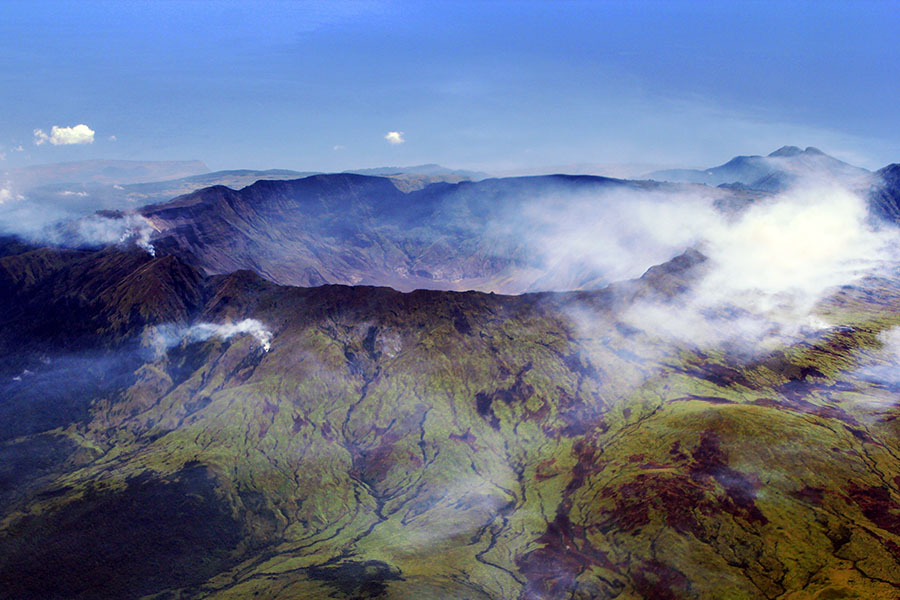 a source:
a source: Tambora awoke with a deafening explosion. The islands that were in the vicinity of the volcano began to fall asleep volcanic ash. When pyroclastic flows began to descend from the slopes of the mountain, the people caught on their way had practically no chance to survive - about 12 thousand people died. The volcano destroyed three kingdoms with an original culture - Pekat, Sangar and Tambora. Even tens of thousands of people died after the eruption.
 a source:
a source: With its eruption Tambora called the so-called year without summer - from May to September 1816 in Europe and North America frosts, which led to a crop failure and, as a result, the death of people from hunger and disease.
Krakatoa - the volcano that gave birth to the most powerful explosion in history
The eruption of the volcano Krakatoa in 1883 affected the whole world. The catastrophe influenced the climate of the planet and for several months "repainted" the sun in green and blue shades. The volcano has informed of its awakening by a powerful roar, which was heard for five thousand kilometers. It is believed that this was the loudest sound in history. From the explosion, the deserted island of Krakatoa was blown apart. From the shock wave, the windows flew in buildings that were within a 130 km radius from Krakatoa.
 a source:
a source: Volcanic rainfall closed the sun, plunging the volcanoes adjacent to the darkness. A hot pyroclastic stream swept through the water and reached the settlements.
Those who survived waited for a new test - the volcano gave birth to a tsunami. Five giant waves struck the shore, flooding the islands of Sumatra and Java. About 300 villages and towns were destroyed. According to official data, about 40 thousand people became victims of Krakatoa.
The catastrophe for several years changed the climate on the planet, causing a cold snap. The release of a huge amount of ash into the atmosphere caused an unusual phenomenon - around the Sun there were circles (halo), and the celestial body itself was colored green and blue for several months.
Look at the destructive power of the pyroclastic flow.
Lucky Volcano - "The Slow Killer"
The eruption of Lucky volcano in Iceland began in 1783. Through the faults that appeared as a result of tremors, lava flowed for eight months.
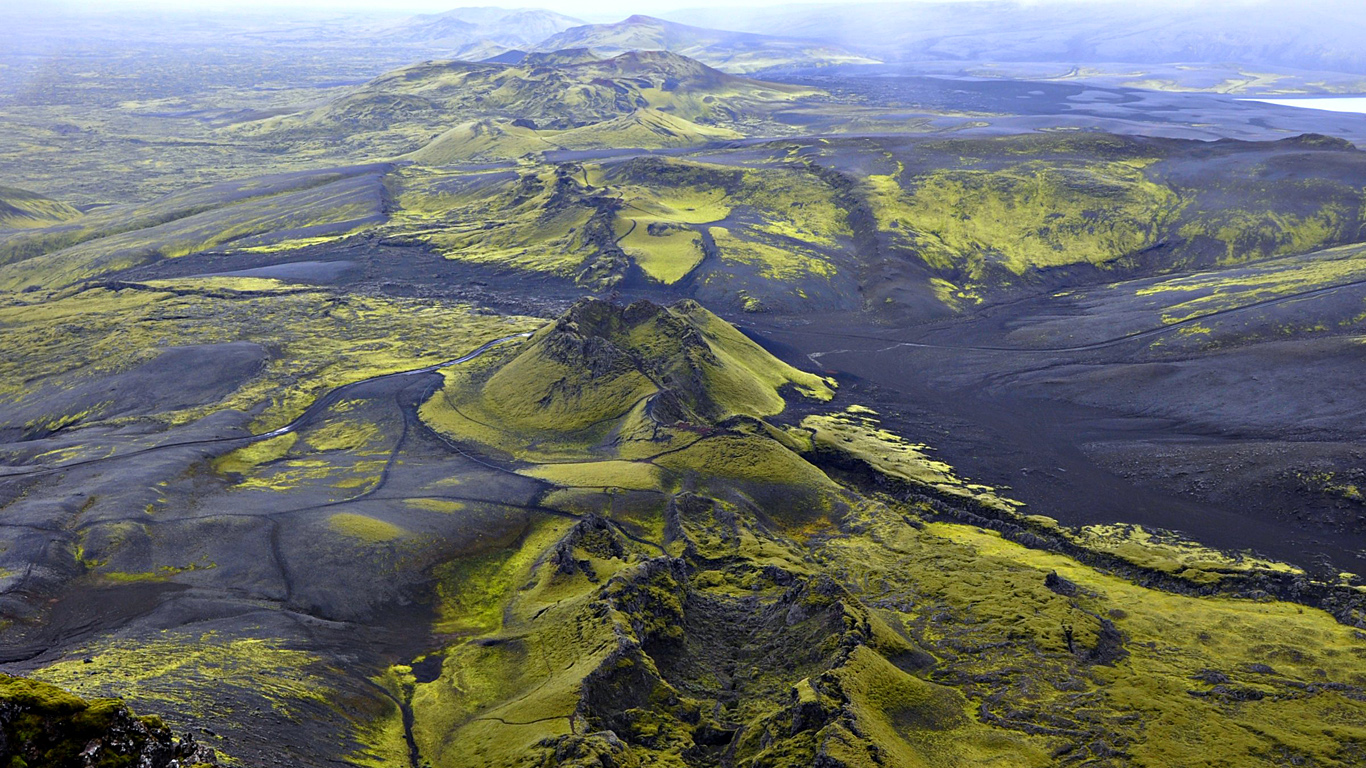 a source:
a source: The situation was aggravated by the awakening of Lucky's neighbor - the Grimsvety volcano. The atmosphere was emitted a huge amount of toxic gases - sulfur dioxide and hydrogen fluoride. These compounds provoked acid rains that destroyed animals and vegetation. Because of the eruption, crops and a large part of the livestock were killed. As a result, more than 20% of the population of Iceland died of hunger and disease.
A poisonous fog spread to Europe. The consequences of the eruption of Lucky were felt for another two years. In the entire Northern Hemisphere, a cold snap was observed, which caused anomalously cold winters. Poor harvest and fall of livestock led to starvation and killed tens of thousands of people.
Pinatubo struck the ozone layer of the planet
The powerful eruption of the Pinatubo Volcano in the Philippine Islands in 1991 was one of the most devastating in the 20th century. The volcano remained silent for 600 years. During this time thousands of Filipinos have settled on its slopes. The explosion took place on June 12, and a column of smoke and ash rose above the volcano.
